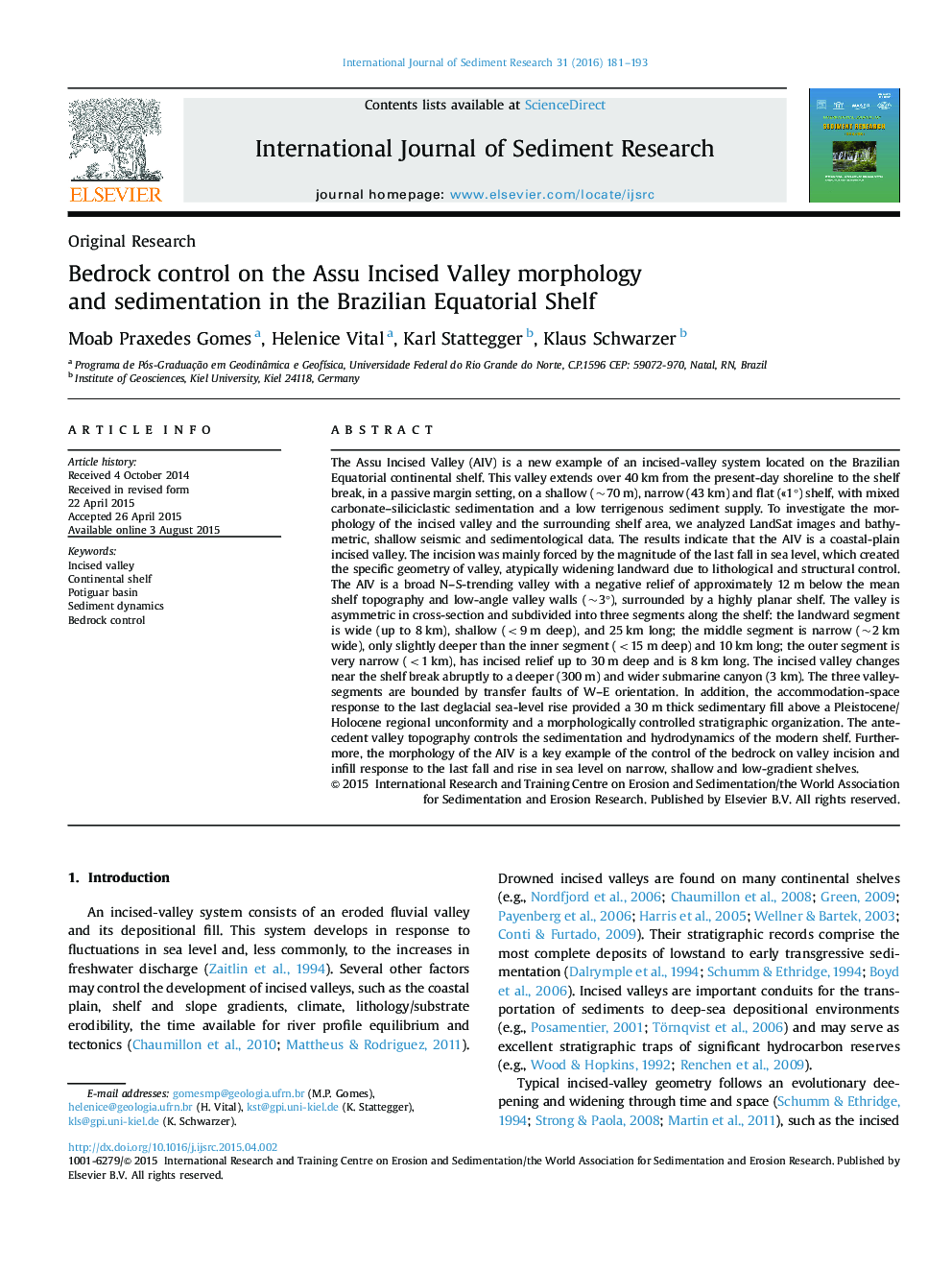| کد مقاله | کد نشریه | سال انتشار | مقاله انگلیسی | نسخه تمام متن |
|---|---|---|---|---|
| 4712255 | 1638097 | 2016 | 13 صفحه PDF | دانلود رایگان |
The Assu Incised Valley (AIV) is a new example of an incised-valley system located on the Brazilian Equatorial continental shelf. This valley extends over 40 km from the present-day shoreline to the shelf break, in a passive margin setting, on a shallow (~70 m), narrow (43 km) and flat («1°) shelf, with mixed carbonate–siliciclastic sedimentation and a low terrigenous sediment supply. To investigate the morphology of the incised valley and the surrounding shelf area, we analyzed LandSat images and bathymetric, shallow seismic and sedimentological data. The results indicate that the AIV is a coastal-plain incised valley. The incision was mainly forced by the magnitude of the last fall in sea level, which created the specific geometry of valley, atypically widening landward due to lithological and structural control. The AIV is a broad N–S-trending valley with a negative relief of approximately 12 m below the mean shelf topography and low-angle valley walls (~3°), surrounded by a highly planar shelf. The valley is asymmetric in cross-section and subdivided into three segments along the shelf: the landward segment is wide (up to 8 km), shallow (<9 m deep), and 25 km long; the middle segment is narrow (~2 km wide), only slightly deeper than the inner segment (<15 m deep) and 10 km long; the outer segment is very narrow (<1 km), has incised relief up to 30 m deep and is 8 km long. The incised valley changes near the shelf break abruptly to a deeper (300 m) and wider submarine canyon (3 km). The three valley-segments are bounded by transfer faults of W–E orientation. In addition, the accommodation-space response to the last deglacial sea-level rise provided a 30 m thick sedimentary fill above a Pleistocene/Holocene regional unconformity and a morphologically controlled stratigraphic organization. The antecedent valley topography controls the sedimentation and hydrodynamics of the modern shelf. Furthermore, the morphology of the AIV is a key example of the control of the bedrock on valley incision and infill response to the last fall and rise in sea level on narrow, shallow and low-gradient shelves.
Journal: International Journal of Sediment Research - Volume 31, Issue 2, June 2016, Pages 181–193
